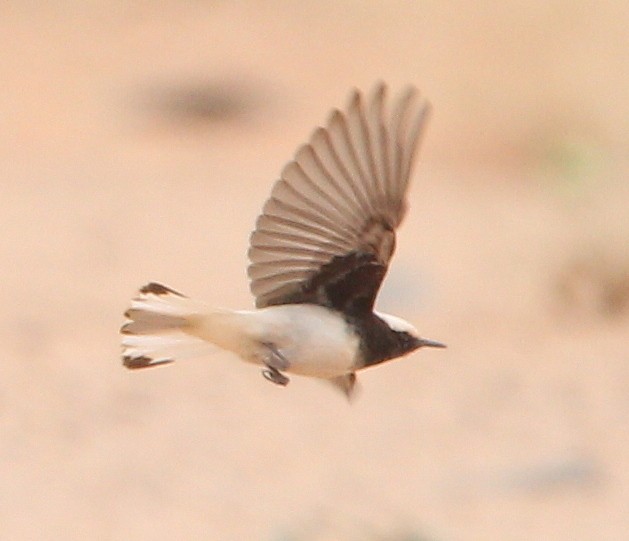Hooded Wheatear
A species of Wheatears Scientific name : Oenanthe monacha Genus : Wheatears
Hooded Wheatear, A species of Wheatears
Botanical name: Oenanthe monacha
Genus: Wheatears
Content
Description General Info
Description
The hooded wheatear (Oenanthe monacha) is a wheatear, a small insectivorous passerine that was formerly classed as a member of the thrush family Turdidae, but is now more generally considered to be an Old World flycatcher, Muscicapidae. This 15.5–17 cm long bird is a resident breeder in unvegetated desert from eastern Egypt through the Arabian peninsula used to be in UAE and Oman a scarce breeder in Hajar mountains to Iran and Pakistan. It occurs annually in Cyprus on passage. The nest is built in a rock crevice, and 3-6 eggs is the normal clutch. In summer the male hooded wheatear is a white and black bird. The white crown and belly contrast with the black face, back and throat. The tail and rump are white with black central tail feathers. The female is brown, becoming somewhat paler below. The tail pattern is similar to the male's, but the ground colour is buff rather than white. Hooded wheatear feeds on insects, often taken in the air. Its call is a whistled vit, and the song is a harsh chattering. 
Size
17 cm
Nest Placement
Ground
Feeding Habits
Hooded Wheatear primarily consumes arthropods such as grasshoppers, ants, and beetles, with a preference for smaller prey under 20 mm. It exhibits aerial foraging techniques, chasing insects mid-flight and also feeding on terrestrial prey from a perch. Hooded Wheatear adapts by consuming ticks from livestock near water sources, showing versatility in its dietary habits.
Habitat
The hooded Wheatear primarily occupies arid and desolate environments such as desert wadis, steep ravines, and open stony or sandy terrain. It is often found in habitats too extreme for other wheatears, including hot, barren areas with sparse vegetation like bushes or rocks, as well as quarries and abandoned buildings in both flat and hilly regions. During migration, they can also adapt to saltmarshes and agricultural fields.
Dite type
Insectivorous
General Info
Feeding Habits
Bird food type
Scientific Classification
Phylum
Chordates Class
Birds Order
Perching birds Family
Old world flycatchers Genus
Wheatears Species
Hooded Wheatear 